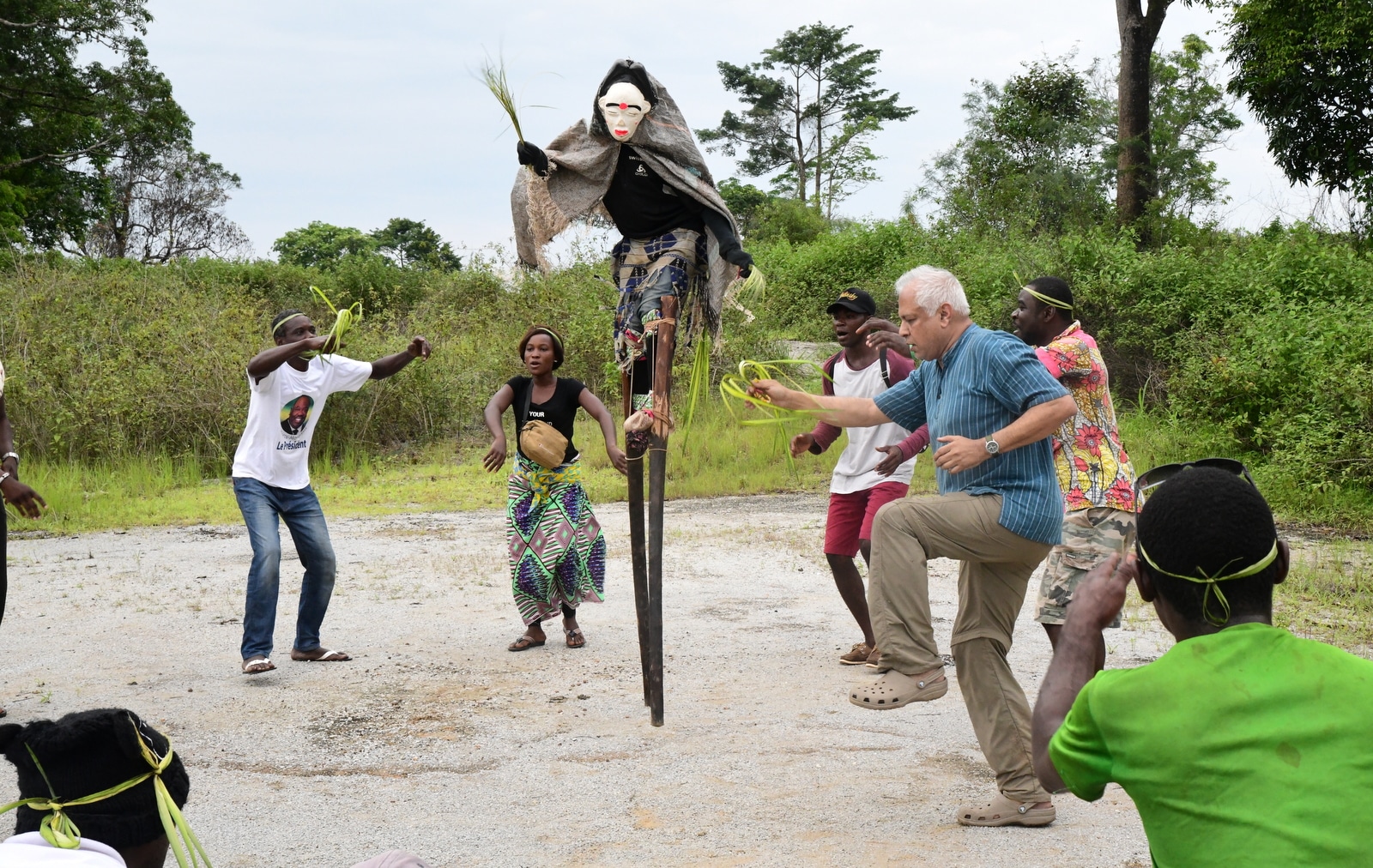This writer witnessed the alluring and ceremonial mukudji dance of the Punu women in a remote Gabon village, originally performed by men dressed as women.
Early this year while near Tchibanga, the de facto capital of the Punu people of Gabon which straddles the border with the Republic of Congo, I got word that there was going to be a small mukudji ceremony in a local village. As a contributor to this magazine, a ceremony that celebrates the female ancestors of a tribe was certainly a special one to witness and report.
So I hastened from my forest abode pillion-riding on a barely functioning motorcycle to reach the village of Loango, where the elders there have still maintained their traditions. To understand the significance of the mukudji dance, I had my NGO colleague and motorcyclist Antonio Anoro translate the answers to my questions to the village chief Jean-Louis Nzamba.
Much of the description is also available through a quick online search, that the Punu are matrilineal and trace their lines of descent through the women of the community. The female ancestors are honored with okuyi ‘white masks’ that harness their power.
There is little doubt in me that Africa is still the last frontier for ancient cultures. Despite rapid modernization, I have been fortunate to visit communities in many parts of West Africa where the effects of Islam and Christianity have had little effect on cultural practices that are both ancient and a record of human development. Having collected West African art for nearly four decades, I never seem to tire looking at their amazing forms. This passion has taken me this past decade into many parts of West Africa including frequent forays into Gabon, where I help in directing an NGO, Gabon Untouched, for sustainable tourism and gorilla habituation.
Loading...
The next stage of my art collection I reckoned should be one where the collections of some of my masks should actually be seen coming to life. While Mali and Burkina Faso offered me amazing experiences in this aspect a decade ago, Gabon has been delivering me some amazing experiences I wish to share here.

The art of the Punu and Fang peoples of Gabon are well-known to the West and served as an inspiration for Picasso and Matisse besides a host of other cubists in the early 20th century. Performances are appreciated as the most aesthetically appealing and exciting form of expression in Punu culture and consequently have become a national icon of Gabon. Such ceremonial dances were originally performed by initiated men who dressed as women; the practice has lately been on the wane.
The mukudj mask of the Punu is especially renowned globally with representative masks found in the major museums of New York, Dakar, Paris, Berlin and London. The Metropolitan Museum of Art, New York, which I am a member of, describes the mask this way: “Among the Punu of southern Gabon, the visual focal point of a dance known as mukudj is a mask whose features are inspired by the most beautiful woman in a community. These marks are transformed into otherworldly spirits when empowered with white kaolin drawn from riverbeds associated with the ancestral realm, and are activated during spectacular acrobatic performances executed on stilts.”
While the average museum-goer reads these words and nods quite unremarkably, I had the opportunity to actually witness one of these ceremonies.
As we assembled around the small village quadrangle with a small group of locals to mourn the death of one of its members who passed away a few weeks ago, the arrival of the mukudji on stilts was quite an affair. To the heavy beating of drums and chants, the mukudji arrived waving a fly whisk.
The purpose of the whisk I understood was to request spiritual intervention in the hunt for malicious sorcerers and witches. By clearing such bad omens, the mukudji prepared the village for celebrations. Dancing on stilts up to two meters high, holding fly whisks, and dressed in costumes of plant fibers, the dancer was a sign of authority and inspired a mixture of admiration and fear in view of the amazing physical exploits of their performances.
Well into the dance, the locals thrusted whisks in my hands and allowed me to dance around the mukudji as a sign of appreciation and acceptance into their community.
The joy of cultural travel is one where you appreciate local traditions, their significance and enjoy the human bond such ceremonies create to strengthen. Africa may be called ‘the dark continent’ by the West, but it reveals to me each day the sophistication of its cultures and the originality of spiritual thinking.
– By Ramdas Iyer
Loading...
